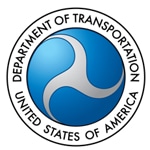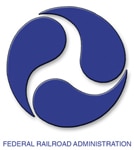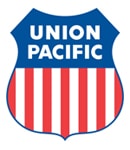
Investigators established that Union Pacific violated the Federal Railroad Safety Act when the company retaliated against the employee for reporting to his supervisors that he was hurt while lifting materials and equipment. As a result, OSHA has ordered the railroad to pay the worker $100,000 in punitive and compensatory damages.
This case follows a pattern of behavior by Union Pacific toward its injured employees. OSHA recently reported that the railroad has faced more than 200 whistleblower complaints nationwide since 2001.
“Union Pacific has repeatedly retaliated against workers who report on-the-job injuries,” said Barbara Goto, acting OSHA regional administrator in San Francisco. “That flies in the face of the protections that the FRSA affords.”
After being hurt, the employee in Roseville reported his injury. Although evidence at an investigatory hearing proved otherwise, Union Pacific charged the employee with causing his own injury by not using proper ergonomic and safety techniques. The company suspended him without pay for five days.
In November 2012, Union Pacific apparently changed course. The company expunged the employee’s record and paid him for the day he attended the investigation hearing and the five days of his suspension. Since the company voluntarily corrected the retaliation, OSHA assessed $50,000 in punitive damages.
Any of the parties in this case can file an appeal with the department’s Office of Administrative Law Judges.
Union Pacific is the principal operating company of Union Pacific Corp, which functions in 23 states across the western two-thirds of the United States. It has 47,000 employees and operates 8,000 locomotives over 32,000 route miles.
OSHA enforces the whistleblower provisions of the FRSA and 21 other statutes protecting employees who report violations of various airline, commercial motor carrier, consumer product, environmental, financial reform, food safety, health care reform, nuclear, pipeline, worker safety, public transportation agency, railroad, maritime and securities laws.
Employers are prohibited from retaliating against employees who raise various protected concerns or provide protected information to the employer or to the government. Employees who believe that they have been retaliated against for engaging in protected conduct may file a complaint with the secretary of labor to request an investigation by OSHA’s Whistleblower Protection Program. Detailed information on employee whistleblower rights, including fact sheets, is available at http://www.whistleblowers.gov.
Under the Occupational Safety and Health Act of 1970, employers are responsible for providing safe and healthful workplaces for their employees. OSHA’s role is to ensure these conditions for America’s working men and women by setting and enforcing standards, and providing training, education and assistance. For more information, visit http://www.osha.gov.
 Acting Federal Transit Administrator Therese McMillan has determined that the random drug-testing rate will remain at 25 percent for 2015 and the random alcohol-testing rate for 2015 will remain at 10 percent for transit employees performing safety-sensitive functions, according to the Federal Register.
Acting Federal Transit Administrator Therese McMillan has determined that the random drug-testing rate will remain at 25 percent for 2015 and the random alcohol-testing rate for 2015 will remain at 10 percent for transit employees performing safety-sensitive functions, according to the Federal Register. A chorus of lawmakers expressed frustration Tuesday with the delays in approving and implementing various regulations related to the movement of hazardous materials by rail and pipeline.
A chorus of lawmakers expressed frustration Tuesday with the delays in approving and implementing various regulations related to the movement of hazardous materials by rail and pipeline. The state House on April 14 passed its version of a bill that would impose new safety regulations on oil shipped through Washington by rail, boat and pipeline.
The state House on April 14 passed its version of a bill that would impose new safety regulations on oil shipped through Washington by rail, boat and pipeline. OMAHA, Neb. – CSX now says that the railroad won’t deliver the double-digit profit growth it promised this year because coal demand remains weak.
OMAHA, Neb. – CSX now says that the railroad won’t deliver the double-digit profit growth it promised this year because coal demand remains weak. Latest safety statistics released by the Federal Railroad Administration (FRA) in April confirmed 2014 was the safest year on record for freight train operations in the United States, according to the Association of American Railroads.
Latest safety statistics released by the Federal Railroad Administration (FRA) in April confirmed 2014 was the safest year on record for freight train operations in the United States, according to the Association of American Railroads. A November train derailment in the Feather River Canyon was caused by a broken rail, the Enterprise-Record has learned.
A November train derailment in the Feather River Canyon was caused by a broken rail, the Enterprise-Record has learned. WASHINGTON – Amtrak is partnering with NOOK by Barnes & Noble, Chuggington and others at select Amtrak Train Days (ATD) events taking place across the country this spring, summer and fall. These celebrations are occurring in more than 20 locations with the official kick-off event at Chicago Union Station on May 9, 2015.
WASHINGTON – Amtrak is partnering with NOOK by Barnes & Noble, Chuggington and others at select Amtrak Train Days (ATD) events taking place across the country this spring, summer and fall. These celebrations are occurring in more than 20 locations with the official kick-off event at Chicago Union Station on May 9, 2015.